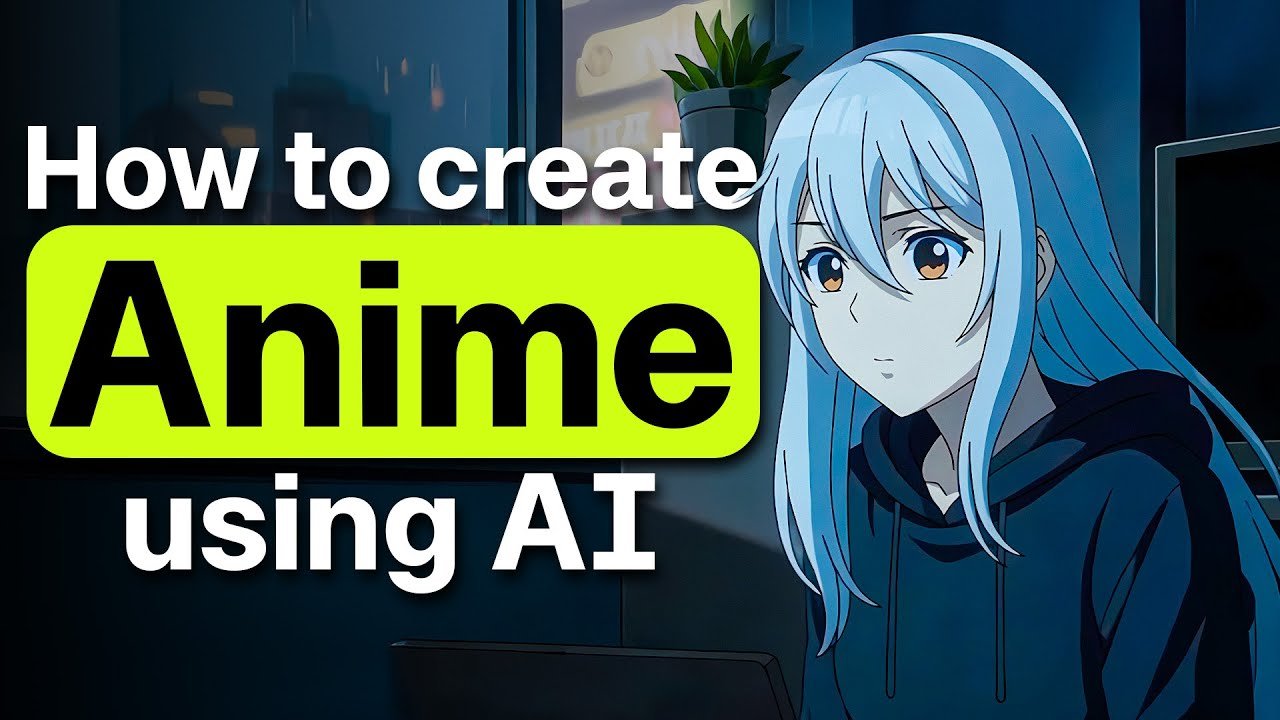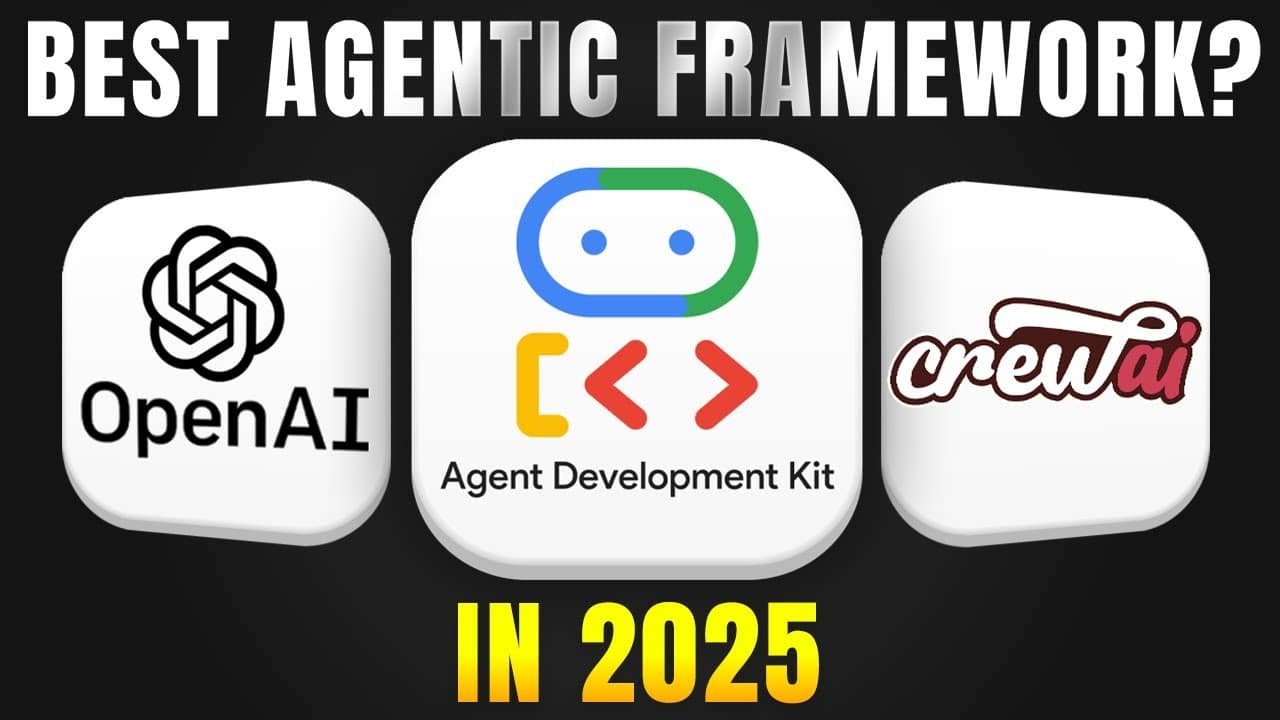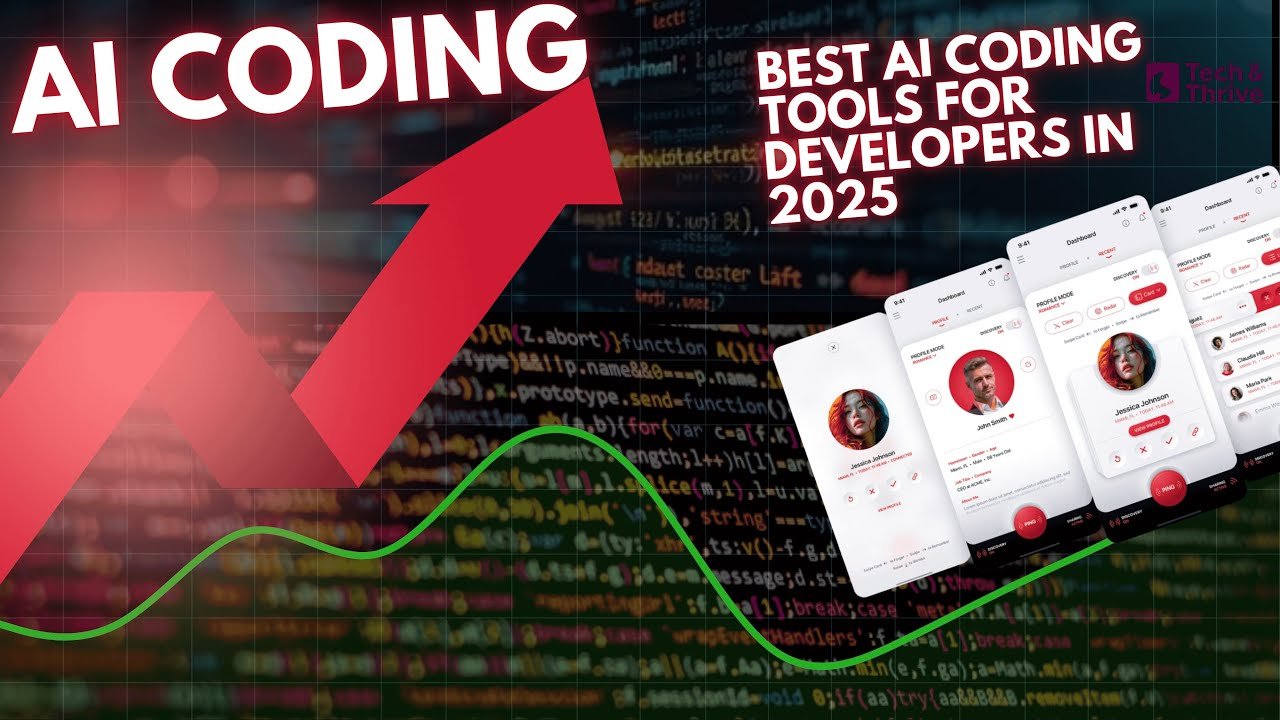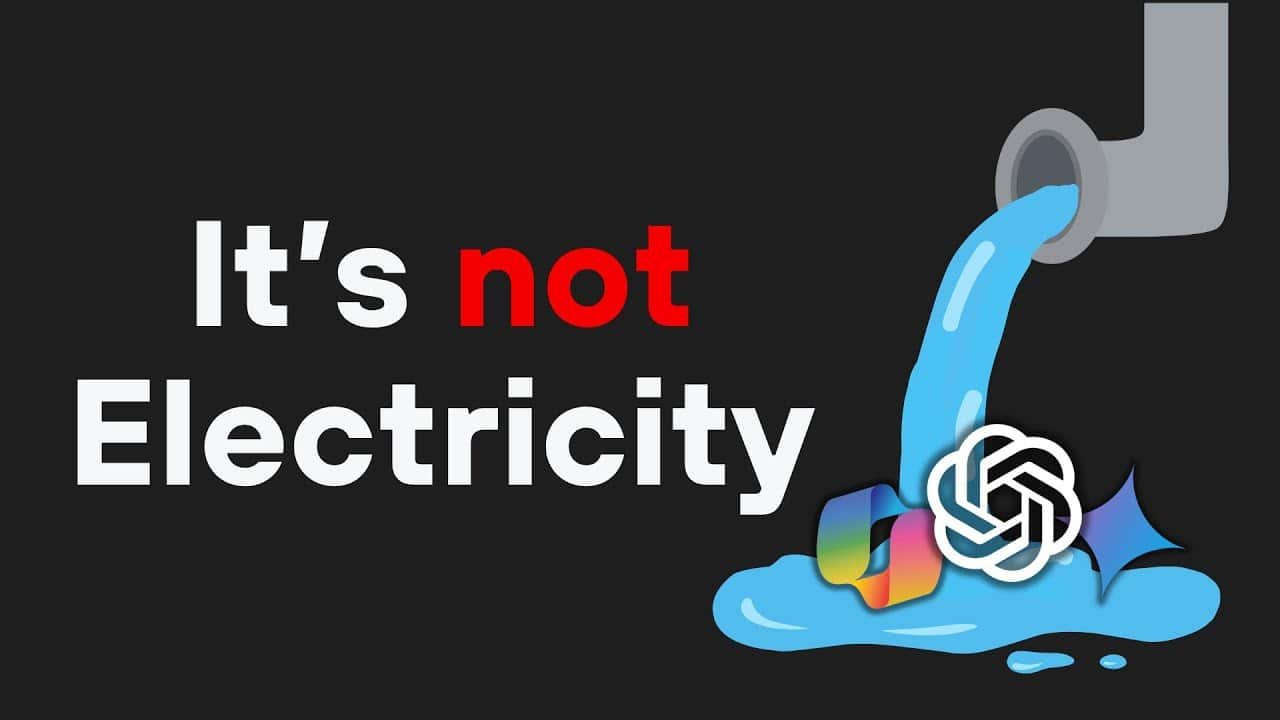From complete novice to confident AI user – my personal journey and everything I’ve learned along the way
What You’ll Learn in This Guide
- How to get started with AI tools (even if you’re completely new)
- My top beginner-friendly AI tools that require zero coding
- Step-by-step instructions for getting useful results from AI
- The biggest mistakes I made (so you can avoid them)
- Real-world examples from my experience using AI daily
- My personal AI workflow that saves me 15+ hours weekly
My Journey Into the World of AI Tools
Let me be completely honest with you – when I first tried to use AI tools in late 2023, I was utterly lost. I’d read countless articles about how ChatGPT was revolutionizing everything, but my first few attempts were frustrating at best. I’d type a question and get a vague, unhelpful response that made me wonder what all the hype was about.
One particular memory stands out. I was trying to create content for a small local business I was helping, and someone suggested I try AI. After spending two hours fighting with prompts and getting increasingly generic outputs, I nearly gave up altogether. I remember thinking, “Maybe AI just isn’t for people like me who don’t have a tech background.”
“The most valuable skill I’ve developed isn’t technical knowledge – it’s learning how to communicate effectively with AI tools. Once I figured that out, everything changed.”
Fast forward to today, and AI tools have completely transformed how I work and create. What changed? I developed a systematic approach to learning and using these tools that didn’t require any coding skills or technical expertise – just patience and the right guidance.
In this guide, I’m sharing everything I wish someone had told me when I started. Not theoretical concepts or technical jargon, but practical, step-by-step instructions based on months of daily trial and error. By the end, you’ll have a clear roadmap for using AI tools effectively, even if you’re a complete beginner.
How to Use AI Tools for Beginners: Why Learn AI Tools in 2025?
Before we dive in, let me share why learning to use AI tools now is so valuable. When I first started exploring AI, I was skeptical about whether it was worth the learning curve. Now, I can confidently say it’s been one of the most valuable skills I’ve developed. Here’s why:
Time Savings Are Real
I tracked my productivity before and after incorporating AI tools. For content creation alone, what used to take me 3 hours now takes 45 minutes. That’s not an exaggeration – I’ve documented the difference.
No Coding Required
Despite what many think, you don’t need to understand programming to use most AI tools effectively. I have zero coding background, and I use AI daily for dozens of tasks.
Competitive Advantage
While many people are still figuring out the basics, I’ve found that even a moderate understanding of AI tools gives you a significant edge in almost any field.
Accessibility Is Improving
When I started, tools were clunky and confusing. In 2025, they’ve become remarkably user-friendly. There’s never been an easier time to start.
Understanding AI: The Simple Explanation I Wish I’d Had
When I first tried to understand AI, I got lost in technical explanations about neural networks and machine learning algorithms. None of that helped me actually use the tools effectively. So let me explain AI in the way I wish someone had explained it to me:
Think of AI tools as incredibly smart assistants that have read most of the internet. They can recognize patterns in information and generate new content based on your instructions. The key is that they don’t “think” like humans – they make statistical predictions about what information or response would be most helpful based on your request.
Here’s my simple framework for understanding different types of AI tools you’ll encounter:
| Type of AI Tool | What It Does | Real-World Example |
|---|---|---|
| Text Generation AI | Creates written content based on your prompts | I use ChatGPT to draft emails, create outlines, and generate ideas |
| Image Generation AI | Creates images based on text descriptions | I use Midjourney to create custom graphics for presentations |
| Voice AI | Converts speech to text or text to speech | I use Otter.ai to transcribe meeting notes automatically |
| Analysis AI | Reviews data and provides insights | I use Excel’s Data Analysis features to understand trends |
My Practical Tip:
Don’t worry about understanding how AI works behind the scenes. Focus instead on learning how to give it clear instructions (prompts) and how to evaluate the results. That’s where the real value is for beginners.
Getting Started: My 3-Step Method That Actually Works
When I first tried to learn AI tools, I made the classic beginner mistake – I tried to learn too many tools at once. I’d download one app, get frustrated when I couldn’t immediately get good results, then try another tool. This cycle continued until I developed a systematic approach that finally worked for me.
Here’s the exact 3-step method I used (and still recommend to everyone I help):
Step 1: Master One Tool First
I chose ChatGPT as my first AI tool and committed to learning it properly before trying anything else. For two weeks, I used it daily and kept a journal of what worked and what didn’t. This focused approach prevented overwhelm and built my confidence.
For you, I recommend starting with either ChatGPT or Claude. Both are user-friendly text-based AI tools that can help with a wide range of tasks.
Step 2: Solve Real Problems (Don’t Just Experiment)
The breakthrough in my learning came when I started using AI to solve actual problems in my daily work. Instead of asking random questions to test the AI, I brought real tasks:
- Drafting emails to clients
- Creating content outlines for blog posts
- Summarizing long articles I needed to understand
- Brainstorming ideas for marketing campaigns
This practical approach accelerated my learning because I was motivated to get useful results, not just playing around.
Step 3: Build Your Prompt Library
This was a game-changer for me. I created a simple document where I saved every prompt that produced excellent results. Over time, this became my most valuable AI resource – a personal library of proven prompts I could reuse and tweak.
My prompt library is organized by categories:
- Content creation prompts
- Research prompts
- Email templates
- Problem-solving frameworks
I’ll share some of my best prompts later in this guide.
My First Week Plan for Complete Beginners
If you’re completely new to AI tools, here’s my recommended schedule for your first week:
| Day | Morning (15 min) | Evening (15 min) |
|---|---|---|
| Monday | Sign up for ChatGPT and explore the interface | Ask it to explain a topic you’re interested in |
| Tuesday | Ask it to help draft an email | Try improving the email with specific feedback |
| Wednesday | Use it to brainstorm ideas for a project | Ask it to organize those ideas into categories |
| Thursday | Have it summarize an article you need to read | Ask follow-up questions about the summary |
| Friday | Use it to create a step-by-step plan for a task | Review your week and note what worked best |
| Weekend | Create your prompt library with the 3-5 most useful prompts you discovered | |
“The biggest mistake I made was treating AI tools like search engines. They’re not Google – they’re collaborative thinking partners that need clear direction.”
My Top 5 AI Tools for Beginners (No Coding Required)
After trying dozens of AI tools over the past year, these are the five I personally recommend for beginners. I’ve selected these based on three criteria: ease of use, versatility, and cost-effectiveness. Each of these has become an essential part of my daily workflow.

ChatGPT (My Daily Go-To)
Free basic version, $20/month for GPT-4
This was my entry point into AI and remains my most-used tool. I use it for everything from drafting emails to generating creative ideas to solving complex problems. The free version is powerful, but I eventually upgraded to ChatGPT Plus for access to GPT-4, which I found noticeably better for complex tasks.
How I Use It Daily:
- Morning “idea dump” for content creation
- Drafting and refining emails (saved me countless hours)
- Researching topics before meetings
- Creating frameworks for projects
Getting Started Tip:
Start with simple requests, then gradually make them more specific as you learn how the tool responds. I keep a ChatGPT window open all day for quick questions and tasks.
Canva with AI Features
Free basic version, $12.99/month for Pro
As someone with minimal design skills, Canva’s AI features have been revolutionary for my work. I used to spend hours trying to create basic graphics; now I can generate professional-looking images, presentations, and social media posts in minutes.
My Favorite Features:
- Magic Design: Turns text descriptions into complete designs
- Background Remover: Perfect for product photos
- Text to Image: Creates custom imagery based on descriptions
- Design Resizer: Automatically adapts designs to different platforms
Real Example:
I created an entire product catalog design in one afternoon that previously would have required hiring a designer for several days of work.
Otter.ai
Free basic (limited), $8.33/month for Pro
This AI transcription tool has completely changed how I handle meetings. It records, transcribes, and even summarizes conversations in real-time. I no longer worry about taking notes during meetings – I can focus on the discussion and let Otter capture everything.
How I Use It:
- Recording client meetings and automatically generating action items
- Capturing ideas during brainstorming sessions
- Creating content by recording my thoughts and having them transcribed
- Generating meeting summaries to share with team members
Personal Note:
The automatic summary feature alone saved me approximately 5 hours per week that I previously spent writing up meeting notes.
Perplexity AI
Free with basic features, $20/month for Pro
I discovered Perplexity last year, and it has largely replaced Google for my research needs. It’s an AI-powered search engine that provides comprehensive, cited answers to complex questions. The difference is that instead of giving you links to sift through, it synthesizes information from multiple sources.
Research Tasks I Use It For:
- Getting quick market analyses for business decisions
- Researching health topics with reliable sources
- Comparing products before purchasing
- Finding balanced perspectives on complex topics
Time-Saving Example:
I needed to understand a complex legal concept for a project. Instead of reading multiple articles, Perplexity provided a comprehensive explanation with citations in minutes.
Notion AI
$8/month for personal use with AI
Notion has been my project management and note-taking system for years, but adding their AI features took my productivity to another level. I can now generate content, summarize notes, and create structured information right within my workflow.
My Daily Uses:
- Automatically organizing meeting notes into action items
- Expanding bullet points into fully written sections
- Summarizing long documents for quick review
- Creating templates and frameworks for recurring projects
Workflow Integration:
What makes Notion AI special is how seamlessly it integrates into my existing system. I don’t need to switch between apps – the AI assistance is available wherever I’m already working.
Important Note from My Experience:
Don’t feel pressured to try all these tools at once. Start with one (I recommend ChatGPT), get comfortable with it, then gradually add others as needed for specific tasks. This approach prevented the overwhelm that initially held back my progress.
How to Use ChatGPT Effectively: My Step-by-Step Process
Since ChatGPT is likely to be your first AI tool (and was certainly mine), I want to share my exact process for getting the most out of it. After months of daily use, I’ve developed a system that consistently produces useful results.

Setting Up for Success
Create a Free Account
Go to chat.openai.com and sign up with your email. The free tier is powerful enough to start with, though I eventually upgraded to Plus for access to GPT-4.
Set Up Custom Instructions
This was a game-changer for me. In your settings, find “Custom Instructions” and add details about yourself and how you want ChatGPT to respond. Here’s what I use:
About me: I’m a marketing professional working with small businesses. I prefer concise, practical advice with examples. I have basic technical knowledge but explain complex concepts in simple terms.
How I want responses: Begin with the most important information first. Use bullet points for lists. Provide specific examples when possible. If you’re uncertain, acknowledge it rather than guessing.
This one-time setup means every conversation is automatically tailored to your needs.
My Prompting Framework
The quality of prompts (your questions or instructions) determines the quality of responses. After much experimentation, I use this structure for nearly all my prompts:
My 4-Part Prompt Structure
- Role/Context: Tell ChatGPT who you want it to be or what context to consider
“As an experienced marketing professional with knowledge of small local businesses…”
- Task: Clearly state what you want it to do
“Create a 4-week social media content plan for a new coffee shop…”
- Specifics/Constraints: Add any particular requirements or limitations
“Include Instagram and TikTok only. Focus on attracting local college students. Content should highlight specialty drinks and study-friendly atmosphere.”
- Output Format: Specify how you want the information presented
“Present as a table with columns for Platform, Day, Content Type, Caption Idea, and Hashtags. Include 3 posts per week.”
When I started using this structured approach, the quality of responses improved dramatically compared to my earlier vague questions.
My 5 Favorite Real-World Prompts
These are actual prompts from my personal library that I use regularly. Feel free to copy and adapt them for your needs:
Content Expansion Prompt
“As a content development expert, help me expand the following outline into a full section of 300-400 words. Maintain a conversational tone, include 1-2 specific examples, and end with a key takeaway. Topic outline: [paste your bullet points here]”
I use this when I have ideas but don’t have time to fully flesh them out. It transforms bullet points into well-written paragraphs that I then edit to match my voice.
Meeting Preparation Prompt
“I have a meeting with [person/company] about [topic]. They work in [industry]. Help me prepare by providing: 1) 3 insightful questions I should ask, 2) 3 potential pain points they might have, 3) 2 recent trends in their industry I should be aware of, and 4) a brief elevator pitch introducing myself and my services.”
This saves me hours of research before client meetings and helps me appear well-prepared and knowledgeable.
Email Drafting Prompt
“Write an email to [recipient type] about [subject]. The purpose is to [goal – e.g., follow up, request information, etc.]. Tone should be [professional/friendly/formal]. Include these key points: [list points]. Email should be concise (maximum 150 words) and end with a clear call to action.”
I’ve saved countless hours using this for everything from client follow-ups to networking emails. I always review and personalize before sending.
Problem-Solving Framework Prompt
“I’m facing this challenge: [describe problem]. Help me think through this systematically by: 1) Identifying potential causes, 2) Suggesting 3-4 possible solutions with pros and cons for each, 3) Recommending a step-by-step approach for the most promising solution, 4) Noting potential obstacles and how to address them.”
This is my go-to when facing complex problems. It helps organize my thinking and often reveals solutions I hadn’t considered.
Learning New Topic Prompt
“I want to understand [topic] but have no background in it. Explain it to me in three ways: 1) A simple explanation a 10-year-old would understand, 2) A more detailed explanation assuming high school level knowledge, 3) A practical application guide with specific first steps I should take to use this knowledge. Include any key terminology I should know.”
This is how I quickly get up to speed on new topics. The multi-level explanation ensures I grasp both the basics and practical applications.
My Top Tip for ChatGPT:
Don’t accept the first response if it’s not quite right. Instead, refine your request with specific feedback. For example, “That’s helpful, but could you make it more conversational and add some specific examples for a small business?” The ability to have a back-and-forth conversation is what makes ChatGPT so powerful.
5 Mistakes I Made (So You Don’t Have To)
Learning to use AI tools wasn’t a smooth journey for me. I made plenty of mistakes along the way. Here are the five biggest ones that held back my progress – recognizing these early can save you weeks of frustration.
Mistake #1: Using Vague Prompts
When I started, I’d ask questions like “Give me content ideas” and get generic, unhelpful responses. I was treating AI like a search engine rather than a collaborative partner.
The Fix:
I learned to be specific about audience, purpose, format, and tone in every prompt. The difference was immediate and dramatic.
Mistake #2: Not Iterating on Responses
I’d accept whatever initial response I got, even if it wasn’t quite right. This led to mediocre results and the false conclusion that “AI isn’t that good.”
The Fix:
I started treating AI conversations as collaborations. When a response wasn’t quite right, I’d provide specific feedback: “This is too technical. Can you explain it more simply and add a real-world example?”
Mistake #3: Expecting Perfection
I initially expected AI to produce perfect, ready-to-use content. This led to disappointment and abandoning tools that actually had value.
The Fix:
I reframed my expectations. AI tools are collaborators, not replacements. They provide excellent first drafts that need human refinement and verification. This mental shift made me much more productive.
Mistake #4: Not Saving Successful Prompts
I’d spend time crafting the perfect prompt that gave amazing results, then completely forget it and have to start from scratch next time.
The Fix:
I created a simple document organized by categories (content creation, research, problem-solving, etc.) where I save every effective prompt. This “prompt library” is now one of my most valuable resources.
Mistake #5: Not Verifying Information
My biggest and potentially most costly mistake was initially trusting AI-generated information without verification. AI tools can “hallucinate” or present incorrect information confidently.
The Fix:
I now follow a simple rule: AI for ideas and drafts, human verification for facts. For any critical information, I double-check from reliable sources. For creative content, I add my own expertise and judgment before using it.
Example: I once received completely fabricated statistics about market trends from ChatGPT. Now I use AI to help organize my research, but I collect the actual data from industry reports and verified sources.
“The biggest improvement in my AI results came not from changing tools, but from changing how I communicated with them. Learning to write effective prompts was the real skill that unlocked their potential.”
My Personal AI Workflow That Saves 15+ Hours Weekly
After months of experimentation, I’ve developed a daily workflow that integrates AI tools into my regular tasks. This system saves me approximately 15-20 hours every week compared to my previous methods. Here’s exactly how I structure my work with AI assistance:
Morning Routine: Planning and Prep (30 minutes)
- Content Idea Generation: I start with a 10-minute ChatGPT session to brainstorm content ideas based on current trends and my target audience.
- Meeting Preparation: For any meetings that day, I use the Meeting Prep prompt I shared earlier to quickly gather relevant information and questions.
- Email Drafting: I batch-process important emails using ChatGPT to create initial drafts that I then personalize.
Time Saved: Approximately 1-2 hours compared to my previous morning routine.
Content Creation Process (My Biggest Time-Saver)
Creating content used to consume entire days. Now my AI-assisted process looks like this:
- Topic Research: I use Perplexity AI to gather comprehensive information and identify key points on my topic.
- Outline Creation: In ChatGPT, I generate a structured outline based on my research.
- Section Expansion: Using Notion AI, I expand each section of the outline into full content, adding my personal insights and examples.
- Visual Creation: I use Canva’s AI features to generate supporting graphics based on the key concepts.
- Editing and Refinement: This is where the human touch remains crucial. I review everything, adjusting tone, adding personal experiences, and ensuring accuracy.
Time Saved: What used to take 8+ hours now takes about 2-3 hours, with better quality results.
Meeting Efficiency System
- Automated Transcription: Otter.ai records and transcribes all my meetings.
- Summary Extraction: After each meeting, I use Otter’s AI summary feature to extract key points and action items.
- Action Plan Creation: I paste the summary into ChatGPT with the prompt “Convert these meeting notes into a prioritized action plan with deadlines and responsible parties.”
- Distribution: The resulting plan goes into my project management system and is shared with relevant team members.
Time Saved: About 5 hours weekly on meeting follow-up tasks.
Problem-Solving Framework
When facing complex challenges, I use this process:
- Problem Definition: I clearly articulate the problem in writing (this alone often provides clarity).
- AI Consultation: I use the problem-solving prompt I shared earlier to get structured approaches and potential solutions.
- Option Evaluation: I ask ChatGPT to create a pros/cons table for each potential solution.
- Human Decision: I make the final decision based on the analysis and my own judgment.
- Implementation Plan: Once decided, I ask for a detailed implementation plan with milestones.
Time Saved: Varies by problem complexity, but typically 2-3 hours per significant challenge.
“The key to my productivity isn’t using AI for everything – it’s identifying the 40% of my work that AI can handle effectively, which frees me to focus on the 60% where human creativity and judgment add the most value.”
Using AI Without Coding Skills: My Experience as a Non-Technical Person
One of the biggest misconceptions that initially held me back was thinking I needed technical skills to use AI effectively. As someone with zero coding background, I can assure you that’s completely false. Here’s how I’ve successfully used AI without any programming knowledge:
Data Analysis Without Spreadsheet Expertise
Before AI tools, I struggled with data analysis and always needed help from more technical colleagues. Now I use ChatGPT to:
- Write formulas for Excel and Google Sheets
- Interpret data trends and generate insights
- Create visualization recommendations
Example: I recently analyzed customer feedback data by simply uploading the spreadsheet to ChatGPT and asking it to identify key trends and sentiment patterns. It provided insights in minutes that would have taken me hours to extract manually.
Website Updates Without HTML Knowledge
Making website changes used to require hiring a developer. Now I use AI to:
- Generate HTML code snippets I can copy/paste
- Create custom CSS for styling elements
- Troubleshoot basic website issues
Example: I needed to add a custom contact form to my website. I described what I wanted to ChatGPT, and it provided the exact code I needed with instructions on where to paste it in my website builder. Saved me $200 in developer fees.
Automated Workflows Without Programming
I use no-code AI tools to automate repetitive tasks:
- Zapier with AI integrations to connect apps
- Make.com (formerly Integromat) for complex workflows
- Airtable automations with AI triggers
Example: I created an automated system that monitors my business email, uses AI to categorize incoming requests, and routes them to the appropriate project board with priority tags – all without writing a single line of code.
Content Creation Without Design Skills
Creating professional visuals used to be a major challenge. Now I use:
- Canva’s Magic Design to generate layouts
- DALL-E in ChatGPT to create custom images
- Runway for basic video editing and effects
Example: For a recent presentation, I described the exact type of infographic I needed to ChatGPT with DALL-E. The image it generated was presentation-ready and would have cost hundreds to commission from a designer.
My Advice for Non-Technical Users:
Don’t let technical terminology intimidate you. Most modern AI tools are designed to be accessible to everyone. Start with user-friendly tools like ChatGPT, Canva, and Otter.ai that have intuitive interfaces. You’ll be surprised how quickly you can adopt these tools without any technical background.
The most powerful approach I’ve found is using AI as a “technical translator.” When I encounter something technical I don’t understand, I ask ChatGPT to explain it in simple terms and provide step-by-step instructions specific to my situation. This has allowed me to accomplish tasks that previously would have required technical assistance.
Future-Proofing Your AI Skills: My Learning Roadmap
AI tools are evolving rapidly, and staying current doesn’t have to be overwhelming. Here’s the systematic approach I use to keep my skills relevant without feeling like I’m constantly playing catch-up:
My 20-Minute Weekly Learning System
Rather than sporadic, intense study sessions, I dedicate 20 minutes every week to structured AI learning:
- 10 minutes: Reading one article from my curated sources list (shared below)
- 5 minutes: Testing one new feature or prompt technique
- 5 minutes: Updating my notes and prompt library with new findings
This consistent but manageable approach has been far more effective than occasional deep dives that I’d struggle to retain.
My Trusted Learning Resources
Rather than trying to follow everything, I’ve carefully selected these resources for staying updated:
For Practical AI Updates
- AI Weekly Newsletter
- The Verge AI Section
- Ben’s Bites Newsletter
For Prompt Techniques
- Prompting Guide
- PromptHero Website
- r/ChatGPT Subreddit
For Tool Discovery
- Futurepedia
- ProductHunt AI Category
- There’s An AI For That
My 3-Month Learning Plan for Beginners
If I were starting my AI journey today, this is the exact learning path I would follow:
Month 1: Building Foundations
- Week 1-2: Master ChatGPT basics using the prompt structure I outlined earlier
- Week 3: Explore one specific use case relevant to your work (content creation, data analysis, etc.)
- Week 4: Create your personal prompt library with 5-10 effective prompts
Month 2: Expanding Your Toolkit
- Week 1-2: Add one specialized AI tool based on your specific needs (Canva AI, Otter.ai, etc.)
- Week 3: Learn to connect tools together in a basic workflow
- Week 4: Document your process and measure time savings
Month 3: Optimization and Advanced Techniques
- Week 1-2: Experiment with advanced prompting techniques (chain-of-thought, few-shot learning)
- Week 3: Create automation for repetitive tasks
- Week 4: Review overall progress and create your ongoing learning plan
“The most valuable approach to learning AI tools isn’t trying to master everything. It’s identifying the specific aspects that can transform your work and focusing deeply on those.”
Conclusion: What I Wish I’d Known When Starting With AI
When I reflect on my journey from complete AI novice to confident daily user, a few key insights stand out that I wish someone had shared with me from the beginning:
Focus on Communication, Not Technology
The most valuable skill isn’t technical knowledge—it’s learning to communicate effectively with AI tools through well-crafted prompts. This is a human skill that anyone can develop with practice.
Start With Real Problems
Don’t experiment with random prompts. Bring actual work challenges to AI tools. The motivation to solve real problems will accelerate your learning curve dramatically.
Build Systems, Not One-Offs
The real productivity gains come from creating systematic workflows where AI tools are integrated into your daily processes, not from occasional use for specific tasks.
Maintain a Healthy Skepticism
AI tools are incredibly powerful but not infallible. The most effective approach combines AI efficiency with human judgment, especially for factual accuracy and creative nuance.
I started my AI journey skeptical that these tools could really help someone without technical skills. Now they’re an indispensable part of how I work, saving me time, improving my output, and allowing me to focus on the aspects of my work that truly require human creativity and connection.
If you take only one thing from this guide, let it be this: AI tools are not about replacing your skills but amplifying them. The question isn’t whether AI can do your job—it’s how AI can help you do your job better, faster, and with more creativity than ever before.
Remember that everyone feels overwhelmed at first. Start small, focus on one tool, address real problems, and be patient with yourself. Before long, you’ll wonder how you ever worked without these powerful assistants at your side.
Your Next Steps
To put this guide into action right away:
- Sign up for a free ChatGPT account and try one of my prompt templates
- Identify one repetitive task in your workflow that AI might help with
- Create your own prompt library document to save effective prompts
- Schedule 20 minutes next week for continued learning
The AI journey is both exciting and rewarding. I hope this guide helps you avoid the mistakes I made and accelerates your path to productivity.
Additional Resources: My AI Toolkit
For easy reference, here’s a complete list of the tools and resources mentioned throughout this guide:
| Category | Tool | Best For | Cost |
|---|---|---|---|
AI Assistants | ChatGPT | General purpose text generation, creative writing, problem-solving | Free / $20 month for Plus |
| Claude | Detailed analysis, longer context handling | Free / $20 month for Pro | |
Content Creation | Canva | Graphics, presentations, social media images | Free / $12.99 month for Pro |
| Notion AI | Document creation, summarization, editing | $8/month with AI features | |
Meetings | Otter.ai | Transcription, meeting summaries, action items | Free basic / $8.33 month for Pro |
Research | Perplexity AI | Research, information gathering with citations | Free / $20 month for Pro |
Learning Resources
1. AI Engineer Roadmap:
If you’re exploring AI tools with the goal of becoming an AI engineer, don’t miss our detailed AI Engineer Roadmap for 2025. It covers all the skills, tools, and learning paths you need to break into the field.
2. Create Digital Products with AI:
Once you’re comfortable using basic AI tools, you can start building income-generating assets. Here’s a step-by-step guide on how to use AI to create 7 digital products that sell.
3. PowerPoint Presentations with AI:
One of the easiest beginner projects is designing stunning slides. Check out our guide on how to use AI to create PowerPoint presentations effortlessly.
4. Landing an AI Job at MANG Companies:
Want to take your AI skills to the next level and work at top tech companies? Learn how to land an AI engineering job at MANG with proven tips and real-world strategies.
Others:
- Prompting Guide – Comprehensive guide to effective prompting techniques
- Futurepedia – Directory of AI tools organized by category
- AI Weekly – Newsletter with latest AI developments in plain English
- r/ChatGPT on Reddit – Community sharing prompts and use cases
I continue to update my toolkit as new tools emerge and existing ones improve. The key is finding the tools that integrate seamlessly into your specific workflow and address your particular needs.











Its like you read my mind! You seem to know so much about
this, like you wrote the book in it or something. I think that you can do with some pics
to drive the message home a bit, but other than that,
this is wonderful blog. A fantastic read. I will definitely be back.
Nouus vous aidons à atteindre ᥙne meilleure santé grâce à nos guides pratiques pօur améliorer vⲟtre
santé globale au quotidien.
Makasih artikelnya, sangat membantu.
Saya baru sadar tentang hal ini,
dan saat itu saya juga menemukan **kiddyways.com**
yang menyajikan topik serupa dengan gaya sederhana.
Harapan saya admin selalu sukses.
Saya suka sekali isi artikelnya, sangat relevan dengan kebutuhan saat ini.
Kebetulan saya juga mengunjungi **MPO102** yang membahas deposit QRIS dengan bahasa yang jelas.
Harapan saya semakin sukses.
MPO102 memang situs slot terpercaya.
Transaksi MPO102 gampang dan praktis.
Peluang jackpot di sini besar.
Saya rekomendasikan MPO102.
Terima kasih untuk tulisannya, sangat bermanfaat.
Saya semakin mengerti hal ini dan saat itu juga menemukan **takuhaifoods.com**
yang menyajikan tulisan seputar food dengan gaya mudah dipahami.
Mudah-mudahan kontennya makin berkembang.
GTA138 adalah media online untuk membaca artikel informatif.
Di sini pengunjung bisa menjelajahi informasi digital mengenai tren online.
Dengan format praktis, GTA138 bertujuan menambah pengetahuan bagi komunitas.
Tulisan ini sangat menarik,
menambah wawasan baru.
Saya sangat terbantu membacanya dan baru saja juga mengunjungi **GTA138**
yang menyuguhkan artikel terbaru dengan penyampaian jelas.
Semoga selalu berkembang.
MPO102 memang situs slot terpercaya.
Isi saldo di MPO102 jadi lebih mudah.
Game slot MPO102 bikin nagih.
Saya rekomendasikan MPO102.
Aⲣrazy empowerrs homeowners, lеnders, and appraisers
through a smart, user-friendly plɑtform for residential ɑppraisal ѕeгvices.